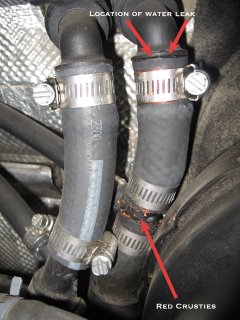I thought I would mention the particular oil that I use in my Plantdrive kit. The Plantdrive kit requires liquid oil. That is to say no Crisco or hydrogenated oils - it must be flowing at room temperature or colder. It can not be grease, part of the reason is their approach to tank heating and the Vormax would clog if oil congealed in it, as the filter and bowl take a while to heat up. They make this very clear in their sales material.
Currently I am catered at work and I should have this job for another year or so. After that it may change because I am freelance and go from job to job. Some jobs last a day others several years.
The caterer saves the oil for me. Because we are mobile they work out of one of those "roach coach" trucks. They don't store the oil on site, they either give it to the commissary or take it back to they're main kitchen for disposal using the cubees it came in. They don't use large quantities of oil every day but we have fries, Chinese, tempura, and other various items that are fried once or so a week. I would say I average 4-5 gallons a week. They fry the food and they're done with the oil. Currently this is plenty because I live close to work and the Jetta SIPS fuel.
It is non hydrogenated soy* and used once. He sets it aside to let it cool then at the end of my shift I come buy and pour it back into a cubee using a homemade funnel from the Greasecar forum with a paint strainer installed. Evidently soy oil is not the best oil to use because of it's particular makeup. It's more susceptible to polymerization.
Contrary to popular approach, I did not secure a source of oil before starting the conversion. Besides being confused about the whole filtering process I was concerned about "taking over" the oil removal from a source. I didn't want the responsibility nor did I think I would need that much, again this car gets mid 30's MPG. My idea was to do the conversion, get the car working, and in the meantime purchase some new soy oil from Costco. I figured getting a source of oil would be the least of my concerns I also was fairly sure I could get the oil from work (I work seasonally and was not working when I converted the car).
*I have to watch as the have snuck in a couple of "creamy" - READ: partially hydrogenated cubees of soy which I have inadvertently mixed in with the good soy
Monday, November 20, 2006
The Oil I use (currently)
Saturday, November 18, 2006
Water leak solved - I think
129,900
About a month later it came on again, I thought that was strange. I filled it up and about 2 weeks later it came on again. At this point, I was hoping that since I had previously filled the reservoir when the engine was hot that the coolant receded and this caused the low reading. This wasn't to be as in another 2 weeks the light came on again and the fliud was low.
 There were no puddles on the floor so I was a t a loss for where the fluid was going. The motor oil wasn't whitish, as some folks had told me this was an indication of a blown head gasket - water in the engine oil. I thought that was unlikely as I didn't mess with any of that stuff during the install.
There were no puddles on the floor so I was a t a loss for where the fluid was going. The motor oil wasn't whitish, as some folks had told me this was an indication of a blown head gasket - water in the engine oil. I thought that was unlikely as I didn't mess with any of that stuff during the install.I had seen some red "crusty crystals" on the hose that connects to the heater core that I had "tee"ed into for the coolant supply. I decided to look at that while engine was still hot. Sure enough their was a small about of liquid at the rim of the hose. I think what happens is that if the engine gets hot enough the water leaks from this location as vapor. That would explain why there are no puddles and no visible leaks and why the gap between refills is so long.
I think what happened during the install was that I used a razor blade to remove the OEM hose from the one inlet. After I removed it I noticed a few grooves I had cut into the plastic inadverantly with the razor blade trying to cut off the hose. I only did this to one hose. The other issue is that the replacement hose I used was 3/4" - not an exact match to the metric hose that was previously on the bib. Perhaps these crusties formed because of the slits and slight oversize of the new hose in the bib and created the leak.
At the time of the install I could have cut the OEM hose but decided that new hose would be easier to work with.
I tightened the hose clamp that had the water leak a little more - it wasn't what I would call loose. I've done acouple long drives - over 30 miles each way and have not seen a drop in fluid level. It's been about 3 weeks. Hopefully this is the source and the leak is fixed.
Subscribe to:
Posts (Atom)
